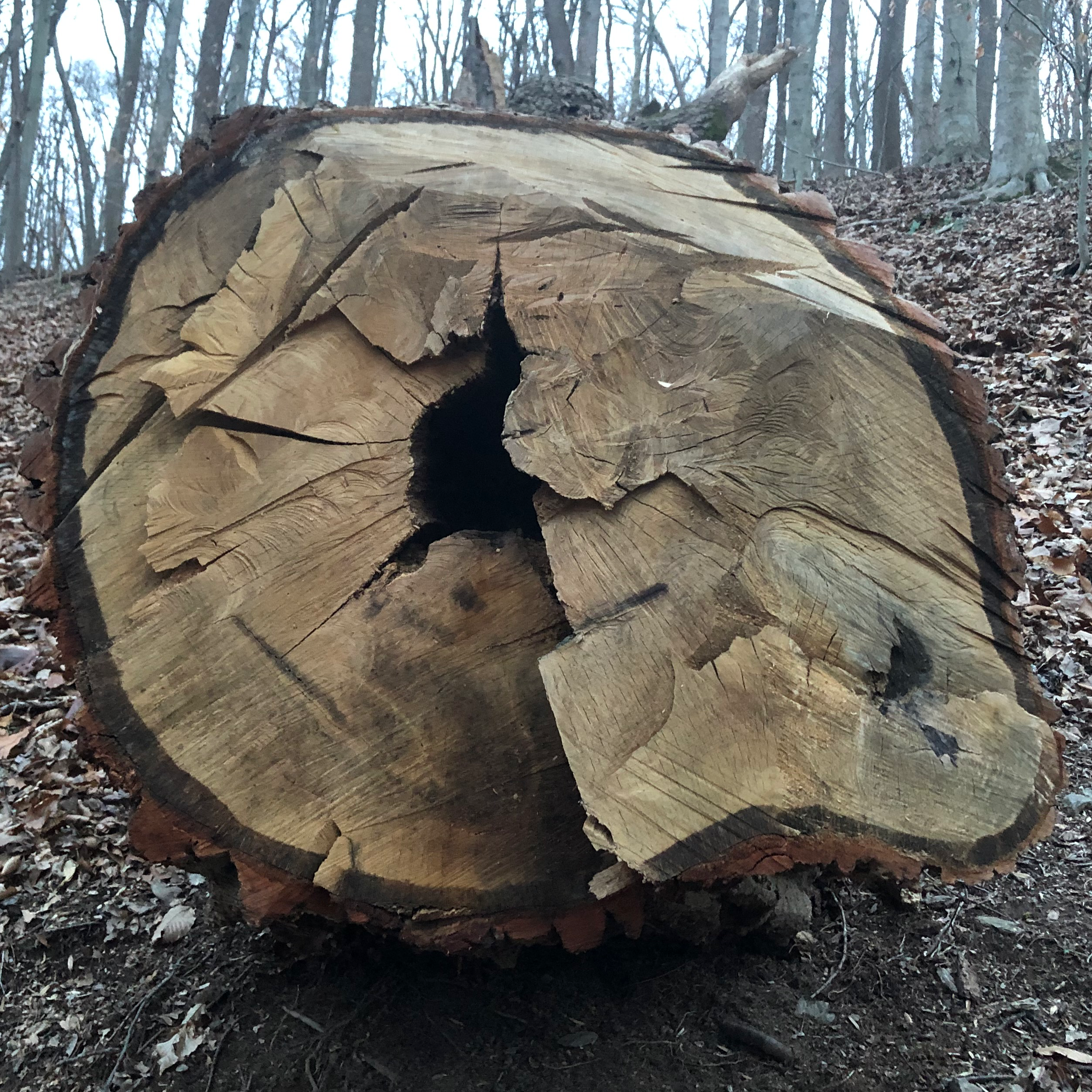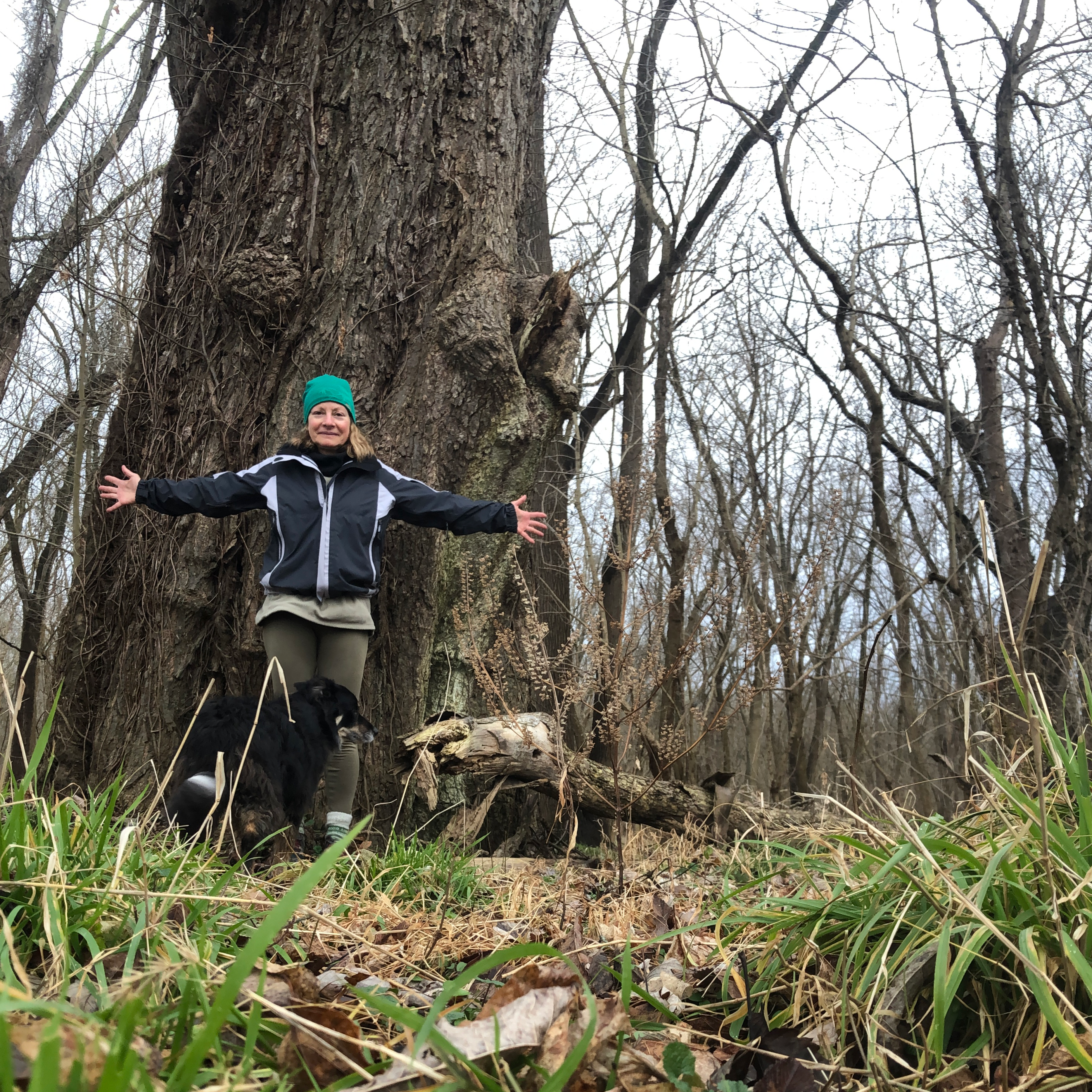Ever wonder how old a tree is? There are a couple easy ways to estimate the age of a tree. Of course, these methods provide general estimates, which are all most nature enthusiasts want to know. The tree in the photo above is an excellent example of a large old Black Walnut tree. However, I don't have a tape long enough to find the circumference plus it has poison ivy vines.
Counting Tree Rings - Dead Trees
If you have read any of my other posts, I’ve noted on multiple occasions that nothing is as simple as it seems. Estimating or exactly calculating tree age is no different. Of course, there is a science to dating and studying tree rings. It’s called dendrochronology. To qualify this discussion, according to the Laboratory of Tree Ring Research, you cannot get 100% accurate dating of tree age by counting the rings. Tree growth rings vary due to environmental conditions, but also there can be false rings and locally absent rings. This method is purely an estimate for fun! Also, one other disclaimer, tree rings can be counted on live trees by taking a core sample. For the purpose of this discussion, I'm assuming that the average person doesn't have the ability to take a core sample on a live tree!
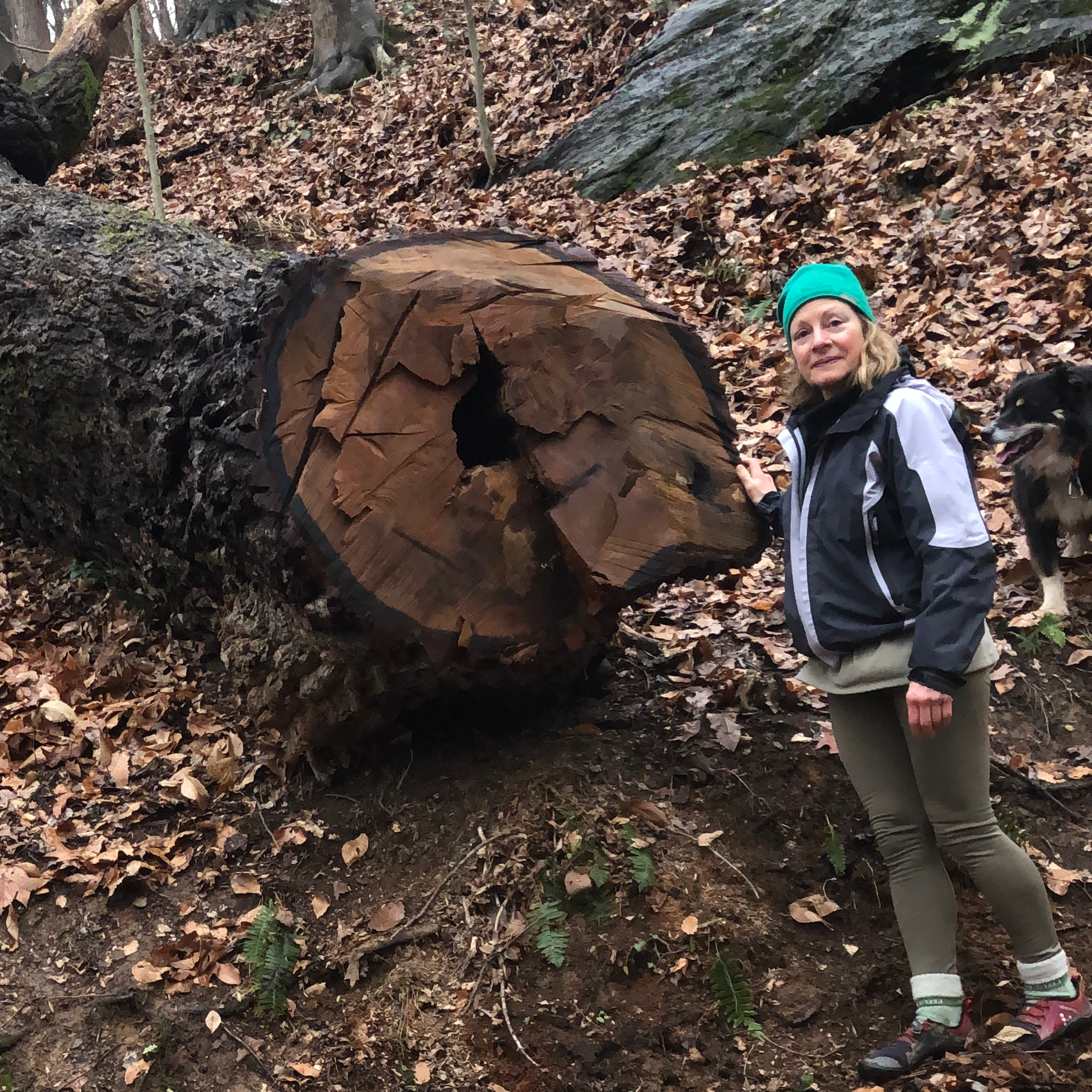
Two Methods
For these estimates, you need a dead tree with a nice cut cross section. Of course, this isn't the best example, however I love this old tree! It fell in 2019.
Method 1 – Count all of the rings. This is simple if the tree is young. It is more time consuming if the tree is old. Of the two methods, because tree ring width varies, this is probably the most accurate of these two methods. Vic counted the rings on the tree in the picture above. It is about 210 years old.
Method 2 – Use this formula: tree age = radius in inches x number of rings per inch. This method is best for rings that are consistently spaced. It will not produce as accurate results for trees that the ring widths are varied. Be sure to decrease the radius by .5 to 1 inch depending on how thick the bark is because bark doesn't have rings.
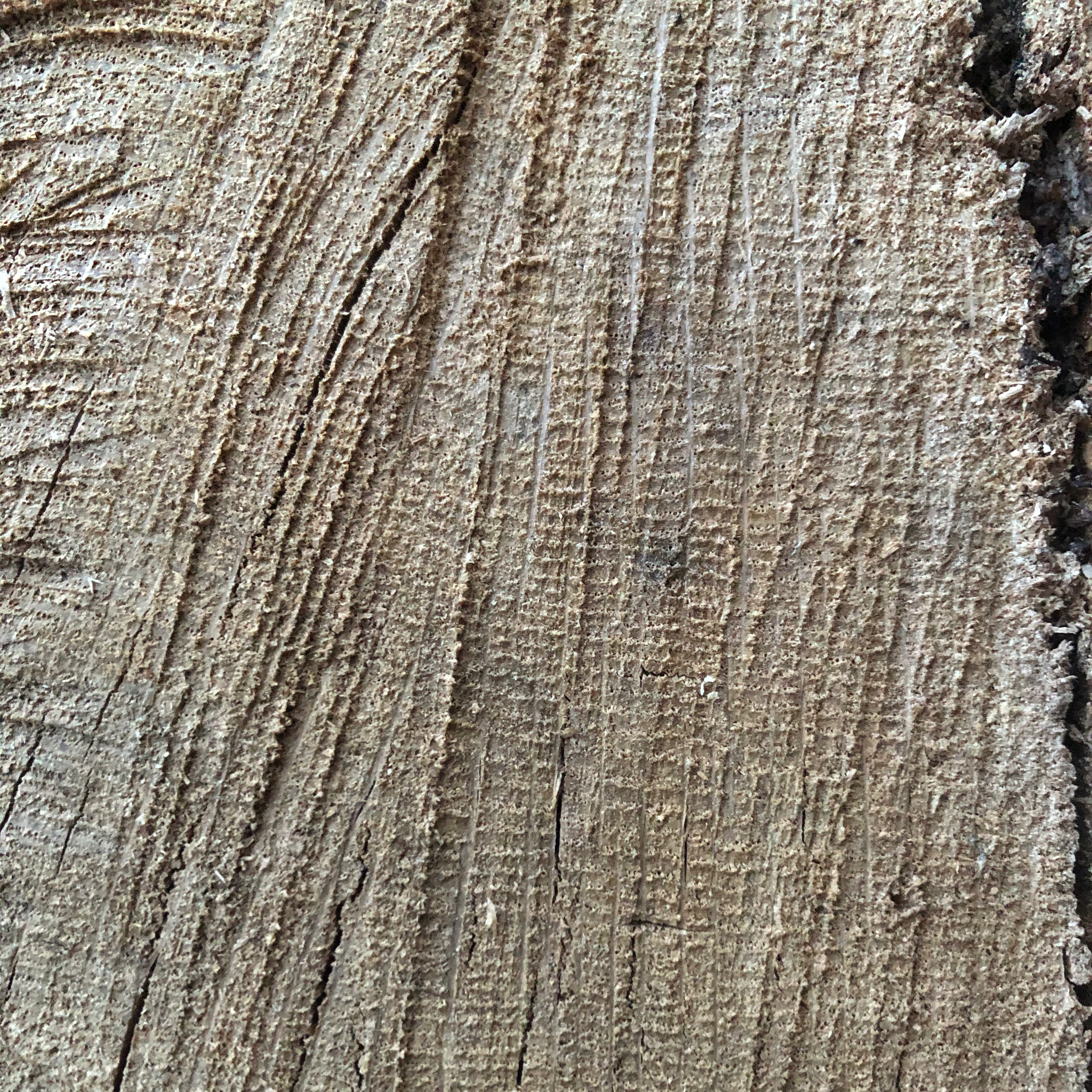
Tree Growth Factors - Estimating Age for Live Trees
Tree species growth factors are numbers that represent the rate of growth of a specific tree species. Because they are species specific, you have to know what kind of tree you are looking at. They are used to provide general estimates of live tree age without damaging the tree.
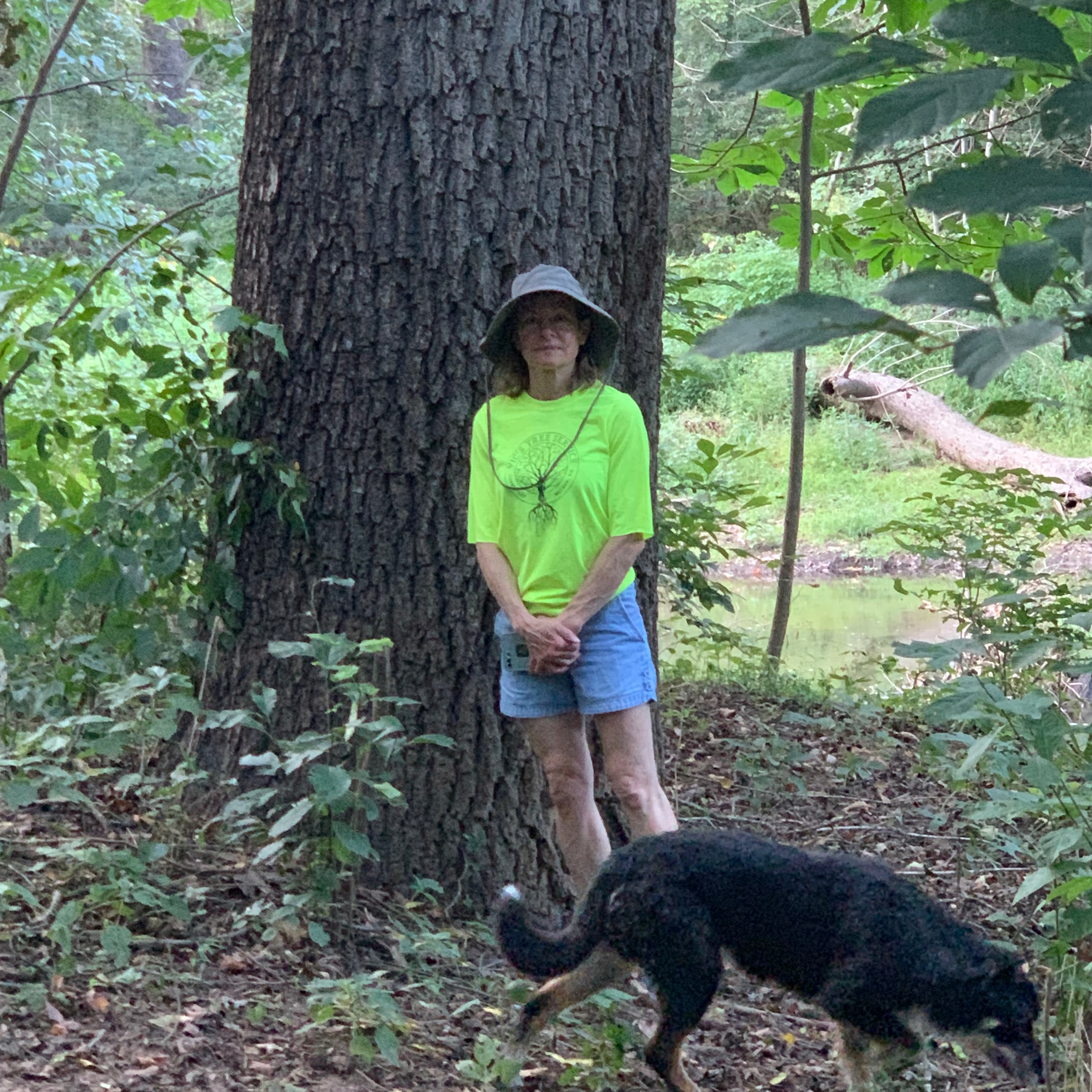
Steps
Find the diameter of the tree. diameter = circumference divided by 3.14 (pi)
For trees, the diameter at Breast Height is (DBH) the gold standard for measuring tree diameter. Breast height is 4.5 feet above ground. On live trees, to find the diameter at this height, we have to find the circumference.
Choose a tree without any branches below 4.5 feet. Otherwise this method is not as accurate. So, first find the circumference, then use the formula to find the diameter.
The circumference of the tree in the picture to the right is 126 inches. So 126 divided by 3.14 = 40.1 inches. The growth rate factor for black walnut trees is 4.5. You can find growth rate factors via links in the references.
40.1 x 4.5 = 180 so, this large black walnut tree is about 180 years old.
If you are interested in learning about Black Walnut Trees check out my blog post.
References:
Laboratory of Tree-Ring Research, “About Tree Rings”, The University of Arizona College of Science, accessed 01/24/20, https://ltrr.arizona.edu/about/treerings
Minnesota Project Learning Tree, “Growth Factor Worksheet,” State of Minnesota, accessed 02/02/2020, https://files.dnr.state.mn.us/education_safety/education/plt/activity_sheets/growthfactorworksheet.pdf
Purcell, Lindsey, “How Old Is My Tree?”, The Purdue Landscape Report, accessed 02/02/2020, https://www.purduelandscapereport.org/article/how-old-is-my-tree/
